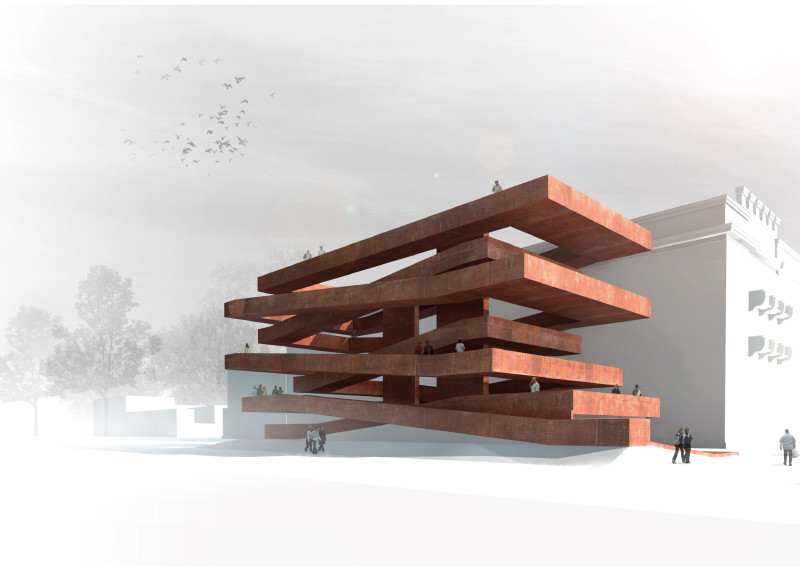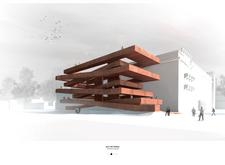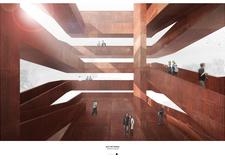5 key facts about this project
### Project Overview
The Baltic Way Memorial is located in a significant urban site adjacent to key city landmarks, designed as a commemorative space that honors a crucial moment in Baltic history—the peaceful demonstration of a human chain formed across the three Baltic states. The intention is to create a public venue that facilitates community interaction, reflection, and educational opportunities, integrating it thoughtfully within the urban landscape.
### Structural Composition and Materiality
The design incorporates horizontally stacked slabs that extend outward, resembling hands reaching across borders to symbolize connection and unity. This structural formation fosters dynamic viewing experiences from various angles, enhancing the memorial's engagement with its visitors. The use of Corten steel, known for its weathered appearance, evokes a sense of endurance and historical continuity, while concrete serves to provide structural integrity and fluidity to the space. The interplay of these materials invites contemplation and aligns with the memorial's thematic objectives.
### User Experience and Functionality
The memorial comprises multiple functional areas, including exhibition spaces for educational programming, a café to encourage visitor relaxation, and a souvenir shop. These elements work in concert to enhance the overall experience, promoting community interaction and dialogue. Landscaped areas surrounding the memorial reinforce the integration of natural elements, offering contemplative spaces amidst the urban environment, while the flexible layout accommodates diverse uses, ensuring relevance for different audiences over time.





















































